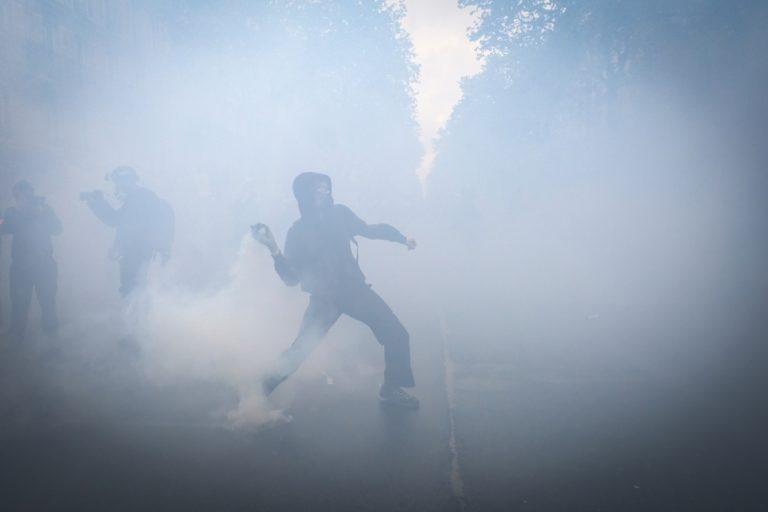At least two people lost their lives, and many others suffered injuries as violent protests erupted in Nepal on Friday. Demonstrators clashed with security forces while demanding the return of the monarchy, which was abolished in 2008.
Supporters of former King Gyanendra Shah took to the streets in large numbers, calling for a constitutional monarchy that would restore Nepal’s identity as a Hindu nation. The movement has gained momentum in recent months, with monarchists accusing political leaders of corruption and mismanagement.
Protest Turns Violent
Dinesh Kumar Acharya, a spokesman for the Nepali police, confirmed that a protester and a journalist were killed. The protester suffered bullet wounds, while the journalist died when protesters set fire to a building from which he was filming. At least 30 civilians and 40 police officers were injured.
To regain control, the government declared a curfew in parts of Kathmandu and deployed the army. Authorities also halted flights briefly as demonstrators moved toward the international airport.
The Push for a Monarchy
Monarchist protests have been growing, fueled by frustration with Nepal’s unstable democracy. Protesters believe that a return to monarchy would bring stability. They argue that elected leaders, including Prime Minister K.P. Sharma Oli, have failed to address poverty and governance issues.
Earlier this month, Mr. Oli rejected the idea of restoring the monarchy. He suggested that if Mr. Shah wished to return to power, he should contest the 2027 elections.
“Our constitution does not recognize kings, and no one should dream of reinstating monarchy,” Mr. Oli stated in a speech.
A Long Road to Change
Despite the growing support for the monarchy, political analysts see little chance of its return. Nepal’s constitution does not allow it, and monarchists hold only a few seats in parliament. Bipin Adhikari, a law professor at Kathmandu University, pointed out that major changes would require constitutional amendments, which are unlikely.
“Constitutionally, there’s no quick fix,” Mr. Adhikari said. “If political instability continues, the military might step in, creating further uncertainty.”
History of Nepal’s Monarchy
Nepal’s monarchy lasted for about 240 years before being abolished. The decision came after widespread protests in 2008. The movement for a republic gained traction following a tragic Royal massacre in 2001, when Nepal’s Crown Prince Dipendra killed most of his family, including King Birendra. Gyanendra Shah, the slain king’s brother, took over but was eventually forced to step down.
Since then, Nepal has struggled with political instability. Governments have changed frequently, and many citizens remain disillusioned.
The Future of Nepal’s Political Landscape
The latest protests highlight deep divisions in Nepal. While some believe that a monarchy could restore order, others argue that democracy must be strengthened instead. The coming months will be crucial in determining whether these protests fade or lead to larger political changes.


